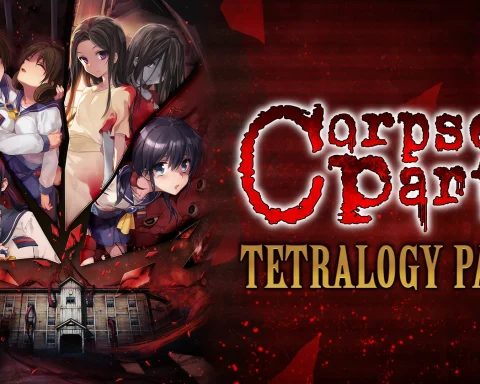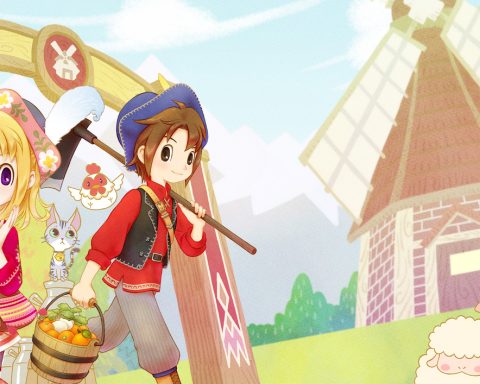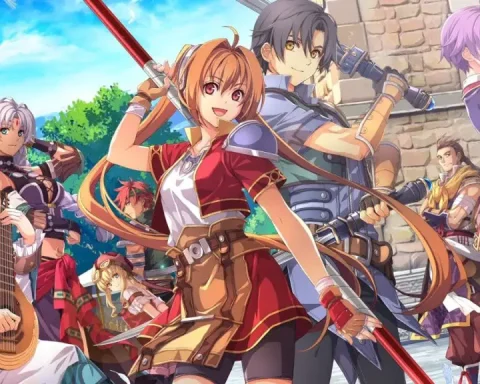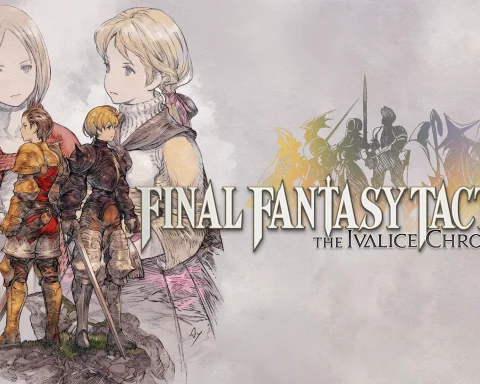 |
| Eric Lee Smith |
Very (very) late last year we reviewed a new iOS release from a new developer. Battle of the Bulge, by, Shenandoah Studios, impressed us mightily because it got some things that are critical to wargames right that most iOS competitors had, to that point, failed to do; it got historical authenticity right, and it nailed the AI.
As a consequence it really did play like the tabletop wargames (the kind with little cardboard squares representing your armies) that have over the years proven such a mainstay entertainment for armchair generals.
That went down spectacularly well with iPad strategians, so much so that Shenandoah’s follow up project, Gettysberg: The Time Turns, is absolutely nailing its Kickstarter campaign, nearly hitting its goal, with a full month left to go.
This is a genre that has a special place in my heart, as I do like reading about military tactics and historical conflicts, and I like being able to grapple with the kinds of strategic challenges that real generals faced in recreations of these battles. This is the kind of game that has next to no presence on consoles, and I’m not much of a PC gamer, so it has been really great to see these kinds of games start to emerge on iOS.
We sat down with Shenandoah’s new marketing manager, Bradley Cummings, and its CEO, Eric Lee Smith, to talk about their vision for iOS wargaming, and plans for the future. As you’ll see in the interview below, it’s clear that this company has been set up by people who are not only game fans, but people who understand business, and as such this is an indie worth watching; I’d expect it to be around for quite some time to come.
Digitally Downloaded (DD): What are your priorities for the next 12 months or so?
Bradley Cummings (BC): We have a lot on our plate over the next 12 months. First, we are in testing on a Universal version of Battle of the Bulge. This will open this game up to iPhone users and make online play more mobile. This update also includes localized versions in Japanese and Spanish. Second, we are hard at work on the engine that will power El Alamein and will continue work on that project. We will also be hard at work on Gettysburg: The Tide Turns, which is currently seeking, support on Kickstarter.
Gettysburg: The Tide Turns is a hex-based wargame for iOS. It is a different genre than Bulge, but it will share its same great features, historical notes, and accessible gameplay. Eric Lee Smith is actually the designer this time around, and the game is loosely based on several Civil War board games he designed in his earlier career. Everyone here is super excited about the project. We are coming back to Kickstarter because our community is key to our success. We really want to involve them early on.
This new project has prompted us to bring in a new team including a new artist, a new lead-developer, and myself in marketing. We are also currently seeking junior developer, and interested parties can check out our website.
We are also focused on firmly establishing both our process and our team so that we can continue to deliver great games next year and beyond.
DD: What made you decide to build a serious wargame for the iPad with Battle of the Bulge?
BC: I think we really saw an underserved market. There are hundreds of excellent casual titles on iOS. I enjoy many of them, just look at my Jetpack Joyride playtime. However, there is also a great opportunity for deep experiences on iOS. We decided wargames would be a good fit as they offer a hardcore experience while also controlling perfectly on iPad. iPad in many ways almost perfectly mimics playing on a tabletop. iPad opened our imaginations and our research and Kickstarter showed that there was an audience ready and waiting.
Eric Lee Smith (ELS): Actually, it is indeed underserved but that is not why we went there. We went there because the founders love board wargames and with the iPad we finally saw a medium that would work for them. We knew there would be an audience because we are the audience, we just didn’t know how fast the iPad would grow and how many people would be there. The answer fortunately has been fast and many. The Kickstarter was early evidence and the success of Battle of the Bulge is the proof.
 |
| Battle of the Bulge |
DD: Wargames are not the most mainstream of genres, and you released it at a relatively premium up-front price point. What was the business decision process that went into that?
BC: When you release a game at $0.99 there is the implication that it will appeal to everyone. When you release a game at $9.99 you are asking your consumer to think before they act. Our goal was to make Battle of the Bulge accessible to both casual and hardcore players (and I think we succeeded), but we also wanted to make sure that people knew they were getting a premium product at a premium price.
ELS: We had a long internal debate about pricing with many of us thinking we should charge more than ten dollars. To an old time board wargamer a ten dollar game is free – I spend $50 to $100 at a pop on board games, so ten dollars is a bargain. We felt that many hobby gamers would agree with us.
Also, we are experienced software people and entrepreneurs. We know you can’t succeed unless you make a good product that is worth the money, which we have done. Here’s what I believe about this topic: the first job of a game company is to stay in business. It’s that simple. Too many game companies focus only on their games and lose track of their business and then one day a failure comes along and they are gone. Under-pricing your games is one of many paths to ruin.
DD: What were your key takeaways from the whole process, and how will you approach your future game projects?
BC: The biggest take away for me was how important our community is. It was through their support on Kickstarter and at launch that we were able to reach such a large audience. The number of tournaments and other events that have been community organized are also something we have noticed and are taking into consideration in our future projects. We also discovered that many players never play online and so we are committed to making strong AI players in future games as we did with Battle of the Bulge.
ELS: I would add that our strategy to design our games – and verify that they are fun! – by making board game prototypes has worked really well. In addition, I think that taking a board game, photocopying it, and pasting it into the iPad is not the way to go. The game needs to be carefully designed and the user experience on iPad must also be carefully designed. We spent several months on the user interface alone and it was worth the time and effort.
DD: It would seem that the major console producers (Nintendo and Sony, at least) are really keen to work with the indies working on original and high-quality games. Are consoles in Shenandoah’s future, and what do you think you could do with the various platforms?
BC: We have no plans to announce right now, but I can say that we are always watching other platforms and will continue to evaluate them from a business/ audience point of view.
ELS: A small company must focus, which means you must say no to some opportunities. For instance, during our early days we considered actually publishing board games too, but I remembered the entrepreneurial adage, “start one company, not two.”
DD: What else would you like to do with the wargame genre, and are there any other styles of games that you’re keen to work on?
BC: Many of us on staff are big wargame fans, but many of us are also fans of board games in general, whether complex or casual. We are certainly interested in projects like this in the future, but nothing to announce at present.
ELS: We have two games to evaluate soon and we have a backlog of titles under contract. We are building our capacity to publish games by building a studio with the firepower to work on a dozen titles at a time. We are not there yet, but we are getting there fast. We intend to publish more casual games too. Why? Because we love them, we are Euro-gamers too.
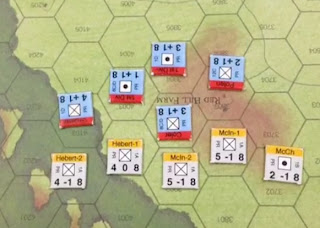 |
| Gettysberg to look a little like this. Wargamers get it. |
DD: Of all games, wargames have the reputation to be the most challenging to program, as the AI routines that are required to make for an interesting game are typically very complex. How does a small team manage the AI development challenges?
ELS: When we started the company we focused on working with game designers – board game designers – that have published solitaire games. That skill is valuable in designing games that work on the computer too. Creating an artificial opponent – the term I prefer – is really difficult and we are focusing on finding people that can do it well, such as John Butterfield.
BC: I think the secret is hiring one of the best AI programmers in the business. Seriously though, Miguel Nieves, our AI programmer is quite the wiz. He does not just program for difficulty but also tries to give each AI a unique personality. I can’t speak directly to the technical challenges, but AI is a major discussion point whenever we approach a new game. So far we have selected designs that while challenging, have clear enough choices that AI has been manageable.
DD: There’s been a lot said about how difficult the games industry is becoming from a commercial point of view. What would you say are the greatest challenges, and how can you mitigate them?
ELS: We don’t look at it that way at all. It is far, far simpler to launch a successful game company now than ever before. Why? Capital cost (much lower today), technology infrastructure (online capacity and development cost a fraction of what they did 15 years ago), and the startup scene (best practices for starting a company). That last item is the most important. I’m on my fourth startup at this point, getting this company funded was not that hard, because we knew what we were doing as game people and as entrepreneurs.
If you want to start a game company I strongly recommend you study how to start a company. I recommend these books: Art of the Start, by Guy Kawaski, the best overview book about starting a company; The Lean Startup, by Eric Ries, the best guide to starting small, but smart; and Growing A Business, by Paul Hawken, the most wisdom per page of any business book I’ve ever read. So, I would say the greatest challenge today is the same as it has always been: do you have a good idea and can you execute?
DD: What game designers inspire you the most, and why?
ELS: I could write an entire essay on this, but I will spare you. I am a big fan of Mark Simonitch, both as a game designer and graphic artist. I have loved the games of Richard Berg all my gaming life, starting back in 1975. I am an admirer of Jim Dunnigan’s games, especially the small jewel-like ones, such as Bulge, World War One, and Napoleon at Waterloo. In a similar vein, I’m a big fan of the Columbia block games and their simple, elegant game systems and fast to read rules.
On the Eurogame side, I’m a fan of Wolfgang Kramer, who is a one-man game industry, and Franz-Benno Delonge, whose game Big City is one of my favorite of all time games. I admire the work of Martin Wallace also, he makes these clockwork game systems that are so finely crafted they take my breath away.
DD: Finally, what games are you playing at the moment?
BC: Recently I have been playing Finest Hour and Limbo on iOS. I have also been playing Game and Wario on Wii U. Needless to say, I have eclectic tastes.
ELS: I’ve been playing Gettysburg: The Tide Turns as a board game. Plus I’ve recently played The Big Idea, Mississippi Queen, and Pinochle. I have a number of new wargames to get into, such as the latest from Against the Odds – I love their stuff. I’ve also backed recent Kickstarters for Lincoln’s War, Sails of Glory, Canterbury, and Amerigo. Oh and I have three games of Battle of the Bulge going on at the moment on Game Center, but I usually have upwards of ten.


